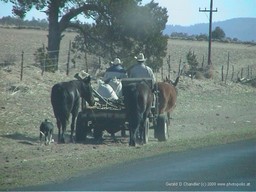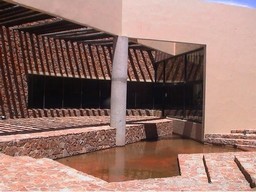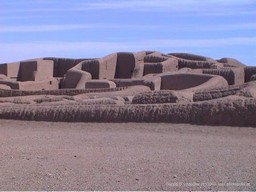Home | Front Page | Blog | Index | New | Contact | Site Map
Parral
Madera
Cuarenta Casas
Paquime
Basaseachi Falls
Copper Canyon
Arepo & Urique Canyon
Guachochi
Sinforosa
Guadalupe y Calvo
Parral
Foto Show
NuevoLeon
Coahuila
Chihuahua
Sonora
Durango
Jalisco
Sinaloa
Zacatecas
San Luis Potosi
Queretaro
Guanajuato
Michoacan
Guerrero
Morelos
Puebla
Tlaxcala
Oaxaca
Chiapas
Campeche
Yucatan
Quintana Roo
Teotenango
Xochicalco
Monte Alban
Mitla
Palenque
Uxmal
Chichen Itza
Tolum
Belize Mayans
Tikal
Copan
General Topics
Churches
Beach Bumming
Swimming Along
States
Websites
Map
Car Costs
> USA-Britain
USA 2003
USA 2002
Britain 2002
We considered driving the long way around to get from Madera to Nuevo Casas Grandes and thence to Paquime. But time pressure made us give up that idea and instead we drove the 'main' road. Nonethelss as you can see from these two photos, the ride was full of surprises. We encountered quite a few horse-drawn vehicles in northern Mexico and perhaps more surprising and more frequent horseback riders. They always looked just like a cowboy, straight out of a movie. Even here you see that the men are wearing cowboy hats, typical headwear for the modern Mexican of the northern desert. We don't know yet what they wear further south, but we will let you know as soon as we do.

Road to Paquime |

Chihuahua High Country |
After the tremendous atmosphere we had experienced sitting in the canyon overhang at Cuaranta Casas, the much bigger archeological site of the city of Paquime was a little, shall we say, flat. Indeed, the city is centered on a huge flat desert valley and at first blush does not seem too impressive. But on further inspection, you see that this was no small village settlement, but rather a large and quite sophisticated cultural, religious and commercial center for a much bigger population of farmers and miners and so on who lived in the surrounding mountains. Probably the inhabitants of Cuarenta Casas came here periodically to participate in religious rites or buy and sell goods.

Paquime Museum |

Paquime Archeological Site |
We spent the first hour and a half in the museum, which is very well done and covers not only the Indians of Paquime but also related groups in Mexico and the Southwestern USA. This was to prove an invaluable basic education for us as we ended up later exploring some of the Arizona Indian sites depicted in the museum.
The valley where the site is located is about 10 miles acros and surrounded by mountains. It reminded us in size of the Meuang Sing valley in northern Laos. Sadly, but probably wisely, you werenít allowed to get very close to most of the remains, which are the lower walls only and made of adobe, a mud and straw mixture, and so pretty fragile. But still it is an impressive site even if not as beautiful as Casa de las Ventanas. The mud-brown color and the nearby bare mountains reminded Jan of the abandoned city of Bam in southeastern Iran. Yes, itís true, everywhere reminds us of somewhere else.
